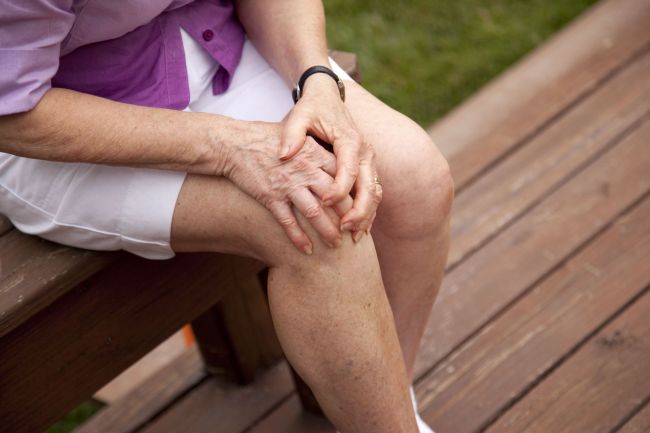Hwang Young-soon, 61, recently heard a creaking sound from her knees while climbing a mountain. Pain in her knees lasted more than three weeks and caused them to swell up. She was later diagnosed with gonarthrosis, a knee joint disorder.
Gonarthrosis refers to all inflammation that occurs in the knee joints. It mostly starts from damage to the overlying cartilage or gristle, caused by either aging, injuries or even infection. While minor pain and a creaking sound signal the disease, the shape of the knee could be deformed in serious cases. Some may feel difficulty moving.
Interest in preventing knee joint disorder is growing as thenumber of gonarthrosis patients has been rising in Korea, especially in spring time, recent data showed.

(123RF)
According to a report released by the state-run Health Insurance Review and Assessment Service, the number of patients who received treatment surged to 2.7 million in the last five years, up 13.5 percent from 2009.
The amounts spent on treatment also rose to about 900 billion won ($852 million), showing a 26.3 percent increase.
The number shot up in spring. March showed the highest jump by 15 percent, followed by April and May, with 4 percent and 3 percent, respectively. A total of 705,000 patients received treatment in May last year, which marks the largest number in recent years. An increase in outdoor activities on warm days led to the higher occurrence rate in spring, doctors said.
“Muscle strength and flexibility remain weakened in spring as many people stay inactive in winter. The sudden start of excessive outdoor activities on warmer days may cause the rise of gonarthrosis patients in spring,” said an HIRA official.
Most cases occurred among senior citizens over the age of 50. Those in their 70s accounted for most of the patients, with 36.4 percent, followed by those in their 60s and 50s, with 28.9 percent and 24 percent, respectively.
By gender, over 70 percent of patients were women in recent years, about 2.7 times higher than men.
Males under the age of 30, however, showed higher occurrences at 60 percent.
“After women go through menopause, their bone density decreases as a result of a sharp decrease in estrogen secretion,” said Moon Young-wan, an orthopedic surgery professor at Sungkyunkwan University School of Medicine in Seoul.
Korean women are more susceptible to knee joint disorder than those in other countries due to their habits and load of housework, Moon said.
“Many Korean women stoop when mopping the floor or washing clothes. Such habits presumably led to a higher number of female patients than other countries,” he added.
Chemical or physical therapy is widely used for treatment. Transplanting artificial cartilage cells serves as an option for those in the final stage of knee joint disorder.
Doctors, however, said it is impossible to completely cure the disease as it is a result of aging.
Rather, they advise patients to focus on deterring the progression of the disease. This includes working out regularly to strengthen muscles and making sure to properly warm up before going out for activities. Doctors also recommended patients avoid becoming overweight in order to reduce the burden on their knees.
By Lee Hyun-jeong (
rene@heraldcorp.com)






![[Weekender] How DDP emerged as an icon of Seoul](http://res.heraldm.com/phpwas/restmb_idxmake.php?idx=645&simg=/content/image/2024/04/25/20240425050915_0.jpg&u=)